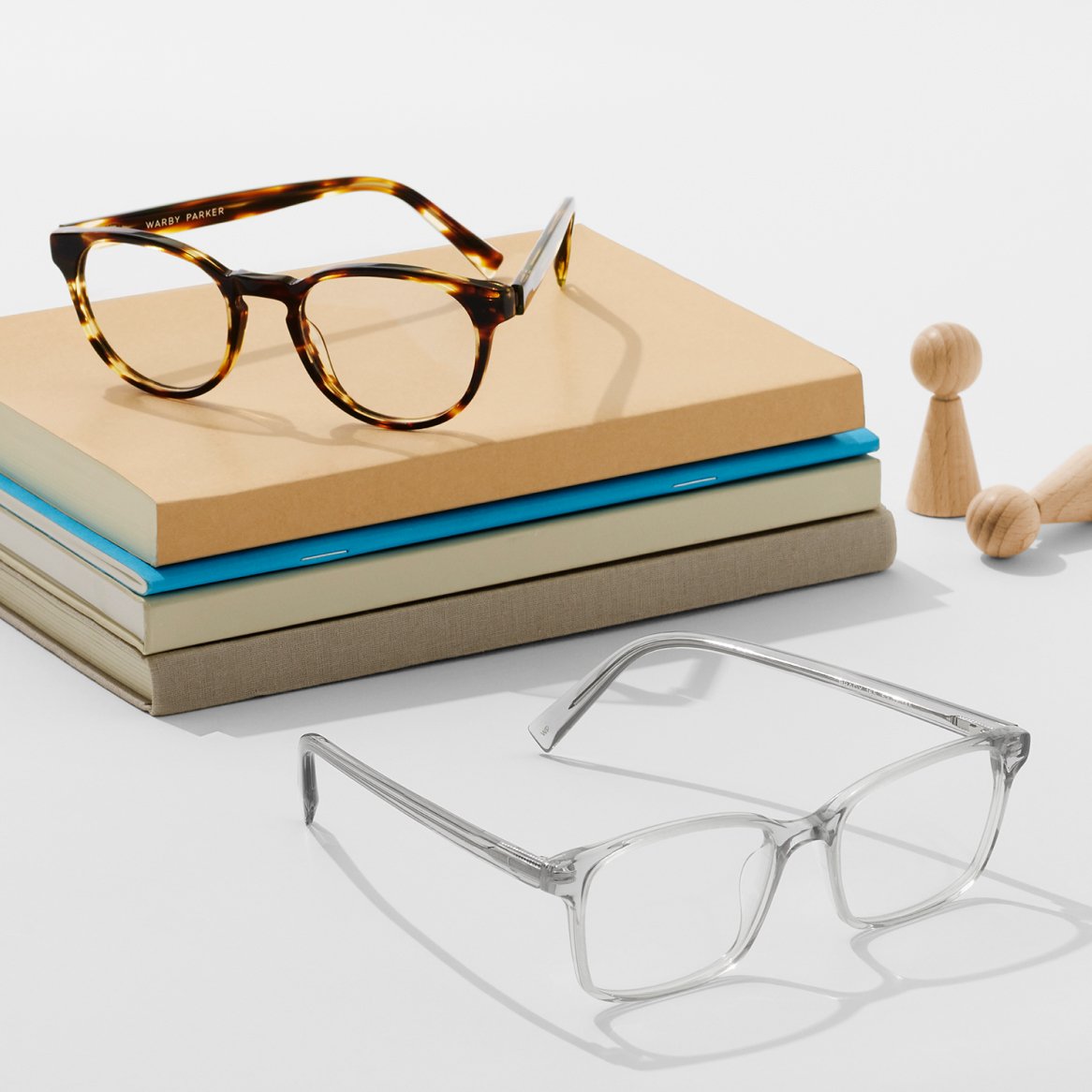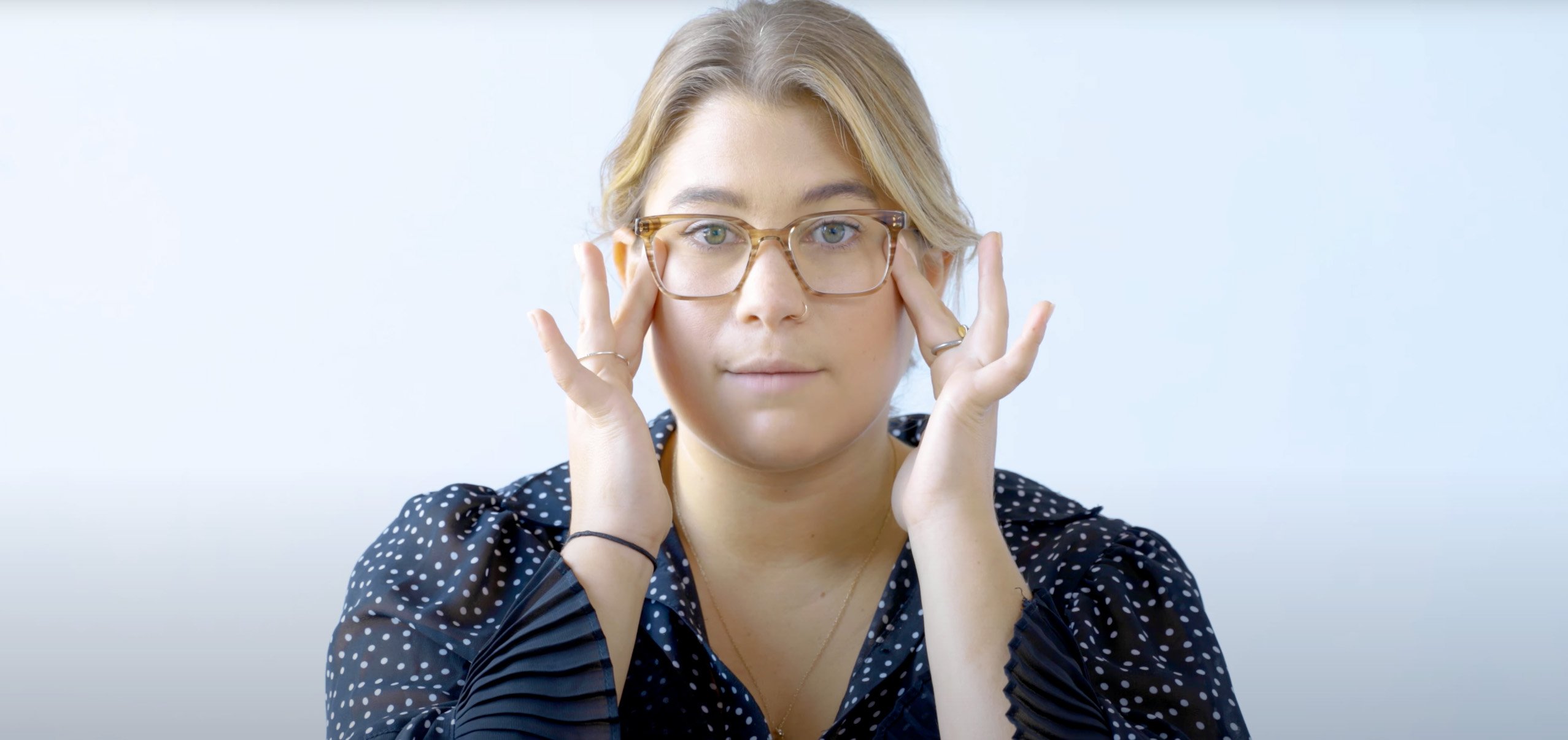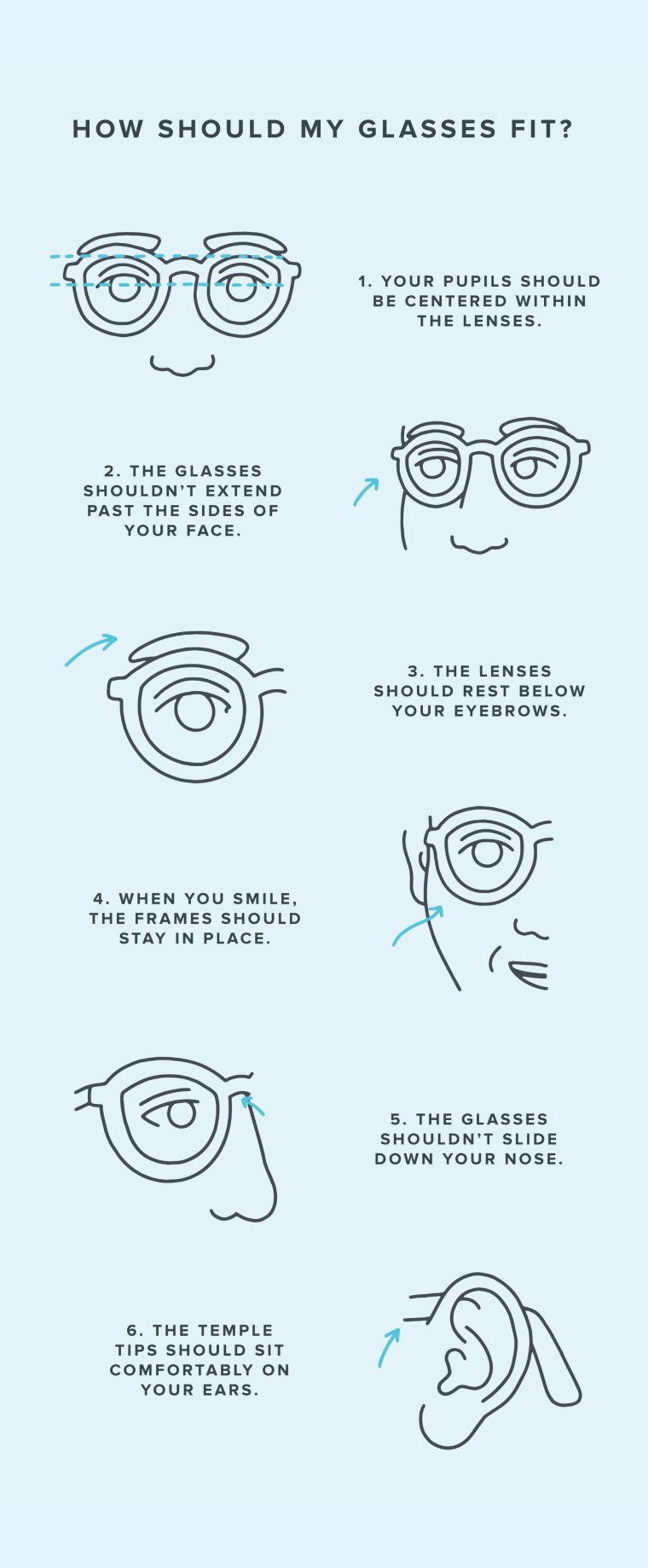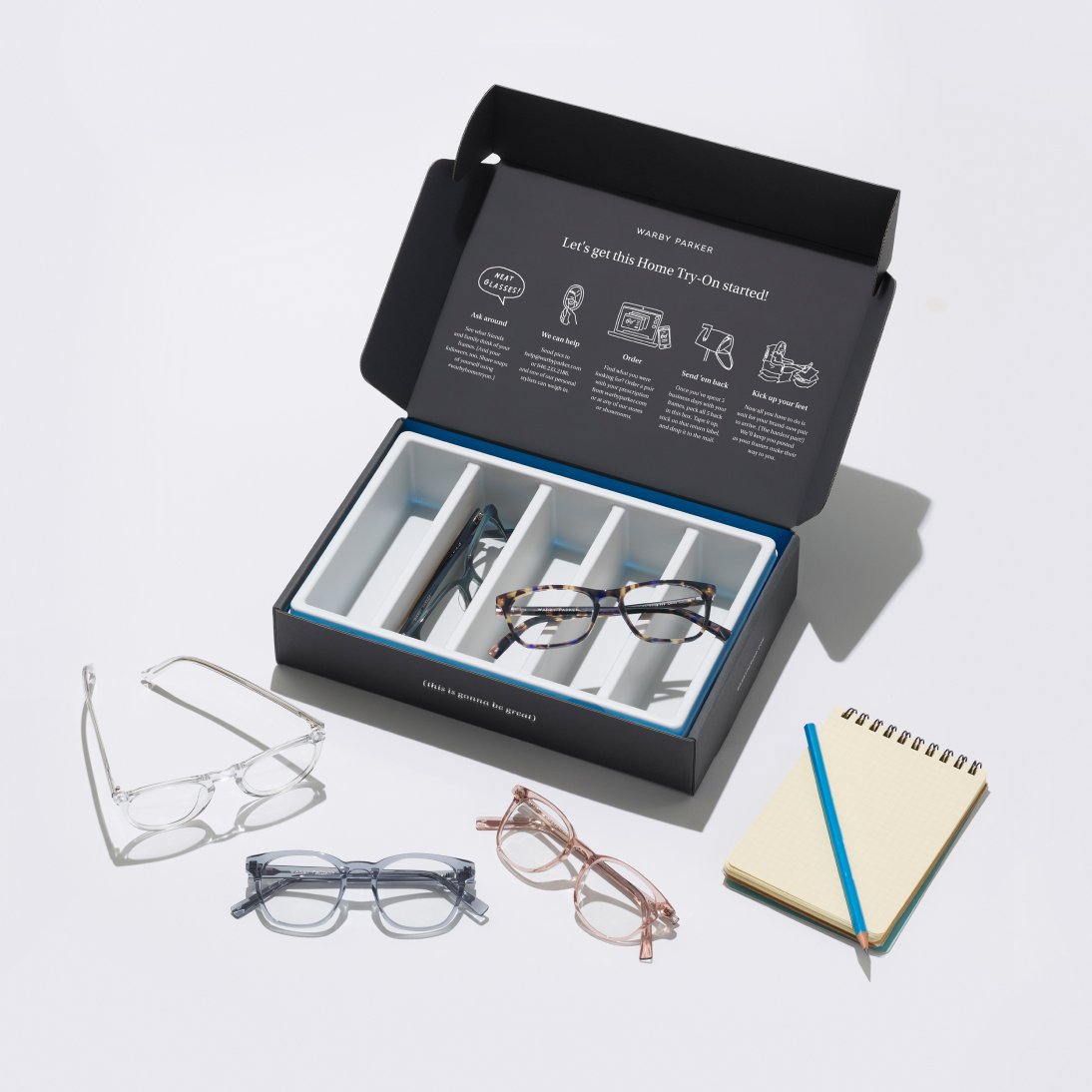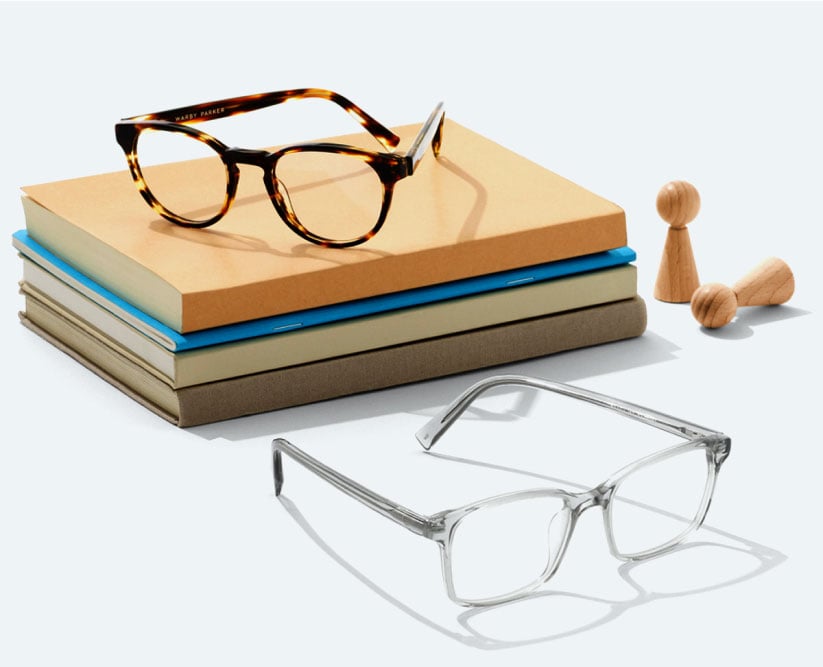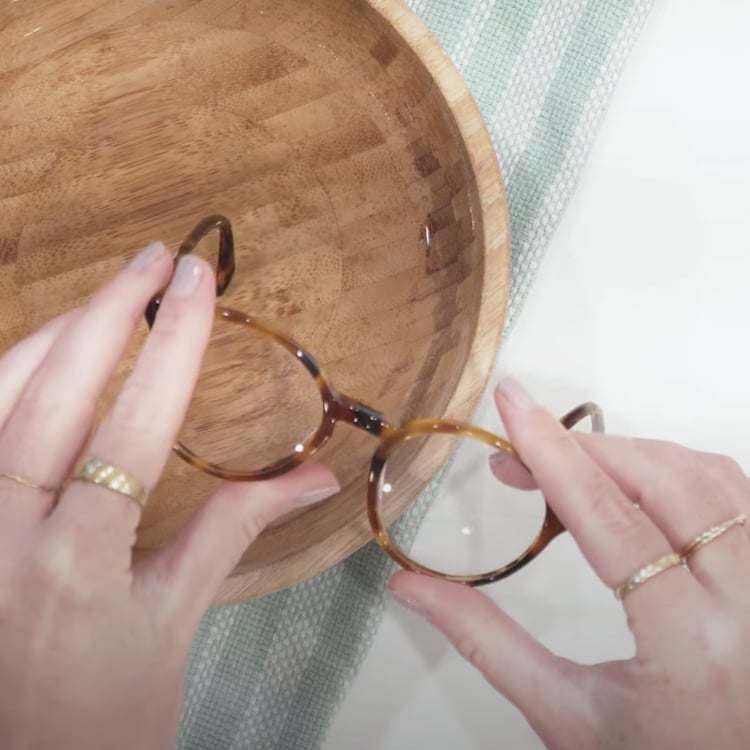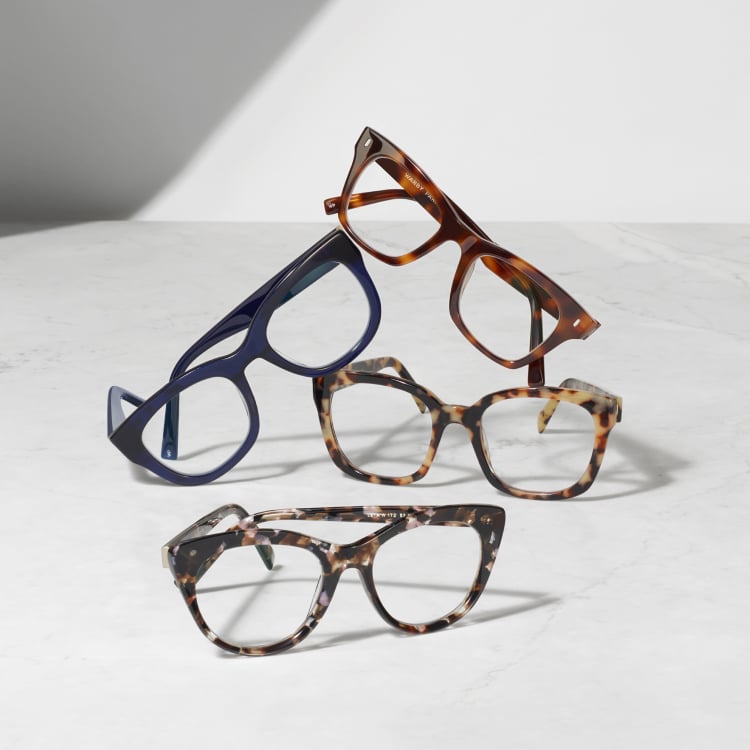When you’re buying a new pair of glasses, your to-do list can grow quite long. From potentially updating your eye prescription, to picking out your favorite frame styles, to researching the types of lenses and coatings, there’s many things to figure out. Amidst all those considerations, it’s easy to forget another important one: fit.
Anyone who’s had a pair of glasses fly off their face at any moment knows that well-fitting frames are a must, but fit is more than a matter of convenience and comfort. Glasses that don’t fit well can cause eye strain, headaches, and disruptions to your vision.
So, what does it look and feel like when your glasses fit? In this article, we’ll walk you through the process of finding frames that are just right for your face.
What Determines the Fit Of Your Glasses?
Glasses might share the same basic build—two lenses in a frame—but there are many differences between individual frames that can impact fit. Additionally, your unique eyes and face shape will help determine how well a frame suits you.
Frame Width
Your glasses frame width should align with your face’s width at its temples. In other words, your frames should not extend too far past the sides of your face. If you’re wearing a frame that’s too wide for you, your eyes won’t be centered in the middle of the lenses.
If you’re shopping Warby Parker frames, we recommend starting with the Medium size, as it’s a good fit for many people.
Frame Measurements
You can usually find frame measurements printed on the inside of one of your frame’s temple arms. These measurements consist of three numbers, representing the lens width, bridge width, and temple length (in millimeters).
- Lens width: The width of one lens.
- Bridge width: The shortest distance between the two lenses, which includes the bar that connects them (the bridge).
- Temple length: The length of each temple arm measured from the hinge to the tip.
The measurements are typically listed in the order above. If you have a pair of glasses that fits you very well, it’s a good idea to take note of its measurements for when you need your next pair.
However, measurements aren’t always the best predictor of fit, and can’t be relied on to tell you if a pair of glasses will feel good on your face. Use them as guidelines!
Pupillary Distance
Your pupillary distance (PD) is the distance between the pupils of your eyes (in millimeters). It’s a handy measurement that helps opticians to center your frames in front of your eyes.
This centering is crucial: Look straight through the middle (or optical center) of your glasses lenses. If you end up looking out of the sides instead, you won’t be getting optimal clarity of vision—especially if you wear progressives and other frames with multifocal lenses. If the fit is preventing you from centering your pupils behind the lenses, transitioning between the zones distance and near vision will be more difficult.
Your optometrist or optician can measure your pupillary distance, or you can measure it yourself. Check out our step-by-step guide on how to measure your pupillary distance at home.
Face Shape
Finally, your face shape can also affect how your glasses fit. No two people have the same exact ears, eyebrows, or cheekbones. Unless you’re an identical twin, you’ll want to try on new frames rather than accepting hand-me-downs.
You can also look for fashion tips about the best glasses for your face shape—but know that those tips should always be taken as suggestions. When it comes to style, follow your fancy!
How Glasses Should Fit Over the Different Parts of Your Face
Even while they’re sitting still, your glasses are interacting with a few different parts of your face. Take note of how a particular frame looks around each of the following features.
How Should Glasses Fit Your Eyes?
The lenses of your glasses should be centered in front of your eyes so that your pupils are looking out of the middle of each lens. This rule applies both horizontally and vertically. Your eyes should not be too far up or down, left or right in relation to the lenses.
How Should Glasses Fit Your Eyebrows?
Your frames should not obscure or be higher than your eyebrows. In other words, make sure your eyebrows stay visible above the tops of your glasses—they’re important for conveying your reactions and emotions!
How Should Glasses Fit Your Cheeks?
Your glasses shouldn’t touch your cheeks or lift up with them when you smile. Instead, they should sit comfortably above your cheeks.
How Should Glasses Fit Your Nose?
The bridge of your glasses (or its nose pads) should rest easily on your nose, without any feeling of compression or tightness. It also shouldn’t be slipping down your nose. The glasses should be balanced, as well—if you find yourself constantly having to tilt them one way or another, the fit isn’t ideal.
Another common question is: Where should glasses sit on your nose? Your glasses shouldn’t be pushed so far up your nose that they’re too close to your eyes or pressing up against other parts of your face, or so far down your nose that you’re looking down to see through the lenses. We can’t give you a hard and fast rule, however, as everyone’s nose is different. The important thing is that your glasses stay balanced, comfortable, and still.
How Should Glasses Fit Your Ears?
The temples of your glasses should sit on the tops of your ears without much notable pressure. If there’s a bend in the temple, it should typically begin right about where the temple hits your ear. If you lean forward, your glasses should not slip forward from your ears.
How Should Glasses Fit Your Head?
Your glasses should never feel like they’re pressing too tightly against the sides of your head. At the same time, they should not feel wobbly or loose—you should be able to shake your head without them moving out of place.
How To Know if Your Glasses Fit
Your glasses are on, and you’re pretty sure they’re aligned with your facial features in all the ways described above. Still, something might feel off. What should you be looking for?
How Tight Are Glasses Supposed To Feel?
Your glasses should never feel uncomfortably tight or even too noticeable on your face. In fact, it can be easy for longtime glasses-wearers to forget they’re there! They shouldn’t be too loose or unstable either. A good rule of thumb: If you’re constantly reminded that your glasses are on your face, they might be too tight or loose.
How Do You Know if Your Glasses Are Too Big?
Glasses that are too big will feel like they’re slipping off of your face and ears. They’ll often be too wide for your face, with the lenses extending too far past the sides. If your eyes look a bit too close together (or close to the glasses bridge), that’s another signal that your glasses might be too big.
How Do You Know if Your Glasses Are Too Small?
Glasses that are too small will often be uncomfortably tight against the sides of your head or on top of your ears. Your temples or the bridge of your nose might feel too much pressure from the glasses, and your eyes might be looking out of the outer sides of the lenses rather than the center.
How Do You Know if Your Glasses Are Crooked?
If your glasses feel tilted to one side or uneven on your face, take a look in the mirror to see if they’re crooked. People often have eyebrows (or even ears) that are on slightly different levels, so don’t judge the straightness of your glasses by inspecting where they sit relative to your brows—look at the bottoms of your eyes instead.
What if Your Glasses Don’t Fit Quite Right?
Need some troubleshooting tips for ill-fitting glasses? Read through the scenarios below to diagnose the problem.
- Your glasses keep sliding down your face: Your frames might be too narrow for your face, or they might be too loose overall.
- The temples are digging in behind your ears: Your glasses are too tight or the temples need adjusting. We always recommend taking your frames to an optician for a professional adjustment. (We adjust Warby Parker frames for free at our retail locations.) If you must adjust your glasses at home, do it with the utmost care.
- Your glasses irritate your nose or leave red marks on your skin: Your frames are likely too tight. If everything else feels great, you might consider looking at frames with adjustable nosepads as an alternative to the uncomfortable ones.
- Your glasses touch your cheeks: If your glasses have adjustable nosepads, they might need to be posed to lift the frames further away from your face and cheeks. If this problem persists across different frames, you could be a great candidate for Low Bridge Fit glasses. These frames are designed for people with low nose bridges, wide faces, and/or high cheekbones.
- Your glasses give you headaches: Headaches can be caused by glasses that don’t fit as well as glasses that don’t match your prescription. If you experience headaches while wearing your glasses, schedule an eye exam with an optometrist to try and pin down the source of the problem.
How Should Sunglasses Fit?
All of the above advice applies to sunglasses as well as prescription glasses. However, sunglass lenses are often larger than regular eyeglass lenses to provide additional protection from bright light and UV rays. If you’re a fan of the oversized look, don’t shy away from sunglasses that take up space—they can overtake your brows if you want!
Opticians Are Experts at Fitting Glasses to Faces
In most cases, you should consult an optician if you’re having issues with how your glasses fit. They can take measurements, adjust your frames, or recommend a different size frame if needed.
Whether you need to wear glasses all day or only in certain circumstances, they should never be uncomfortable. Make sure you’re getting the best fit for your face along with the best vision for your eyes!

